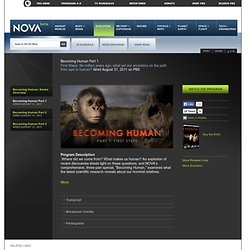

Ariane Dalla Déa
Professor of Anthropology
IO - The Global Leader in Software-Defined Data Centers. Anthropology - General. Anthropology. Anthropology. Anthropology. Anthropology. Anthropology. Anthropology. Cultural Anthropology. THEATRE & ANTHROPOLOGIE. Anthropology of Religion. Cultural Anthropology. Biological/Physical Anthropology. Evolution. Laboratory inquiry 1: Reconstructing ancestral primates. Note: This page will change, as your inquiry assignment progresses.

Keep checking back here. Humans, living apes and monkeys are grouped together as anthropoid primates. The anthropoids share a common ancestor that lived sometime more than 55 million years ago. Paleontologists have found fossils of ancient anthropoids that lived very near that ancestor, and also ancient anthropoids that were related to tarsiers, the next closest branch of the primate phylogeny. Among the anthropoids, Old World monkeys (cercopithecoids) and hominoids are closer relatives, and New World monkeys (ceboids) are more distantly related.
In this inquiry-based laboratory project, you will use evidence from two recent primates to infer the probable anatomy of their common ancestor. How can scientists reconstruct the anatomy of a common ancestor, if they haven't necessarily discovered fossils of that species? Every inference about an ancestor is a hypothesis. We test this hypothesis in several ways. Becoming Human: Series Overview. Becoming Human – Hour 2 PBS Airdate: November 10, 2009 NARRATOR: Humans: without a doubt, the smartest animal on Earth.

Yet we're unmistakably tied to our ape origins. Millions of years ago, we were apes, living ape lives in Africa. So how did we get from that to this? The questions are huge. At the threshold of humanity, one ancestor contains tantalizing secrets. RICHARD WRANGHAM (Harvard University): Homo erectus had a slightly smaller brain, slightly bigger jaw, but it's basically us. NARRATOR: Basically us, almost 2,000,000 years ago. New finds are revealing the truth about the ancestors at the heart of our evolution. Becoming Human PBS Video question. Hardy-Weinberg.
The Hardy-Weinberg formulas allow scientists to determine whether evolution has occurred.

Any changes in the gene frequencies in the population over time can be detected. The law essentially states that if no evolution is occurring, then an equilibrium of allele frequencies will remain in effect in each succeeding generation of sexually reproducing individuals. In order for equilibrium to remain in effect (i.e. that no evolution is occurring) then the following five conditions must be met: Obviously, the Hardy-Weinberg equilibrium cannot exist in real life.
Some or all of these types of forces all act on living populations at various times and evolution at some level occurs in all living organisms. P = frequency of the dominant allele in the population q = frequency of the recessive allele in the population p2 = percentage of homozygous dominant individuals q2 = percentage of homozygous recessive individuals 2pq = percentage of heterozygous individuals PROBLEM #1. Biological Anthropology. Linguistic Anthropology. Archaeology.
Ethics. Anthropology Links.